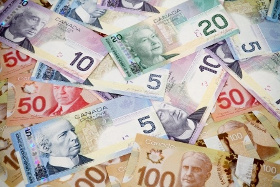The US dollar is struggling to hold onto its weekly gain against some of its key currency pairs as the number of Americans filing for first-time unemployment benefits surged to its highest level since September. Higher inflation and fiscal stimulus negotiations stuck at a standstill weighed on the greenback. How much more room is there for the buck to fall to wind down 2020?
According to the Bureau of Labor Statistics (BLS), initial jobless claims surged to a three-month high of 853,000 in the week ending December 5, coming in higher than the median estimate of 725,000. This is way up from last week’s 716,000 reading, suggesting that the initial premise that recently unemployed would wait until after the Thanksgiving holiday to submit applications for jobless benefits was correct.
New jobless claims increased the most in California, Illinois, New York, and Texas. Louisiana reported the largest decline.
Continuing jobless claims jumped to 5.757 million, while the four-week average, which removes week-to-week volatility, rose to 776,000.
Last week, 427,609 applications were submitted for benefits filed through a temporary federal relief program that expires the day after Christmas.
When you factor in the nine federal and state benefit programs, the weekly number of Americans filing for first-time unemployment benefits has yet to slide below one million during the coronavirus pandemic.
The rise in Americans losing their jobs comes as the US experiences a dramatic resurgence in COVID-19 cases. The US added one million new infections in just one week, raising the total figure from 14 million to more than 15 million. The country has a death toll of 290,000.
Republicans and Democrats are stuck at a standstill over a roughly $900 billion coronavirus stimulus and relief package. It is unclear when congressional leaders will move ahead, but it is considered a critical proposal because it contains $600 in direct payments to Americans. So far, the GOP has stated that it is willing to concede liability protections for small businesses to advance the legislation.
Until then, Senate Majority Leader Mitch McConnell (R-KY) is refraining from adjourning without providing COVID-19 relief. He said in a statement:
Leaving here without a COVID relief package cannot happen. Why donât we set aside the two obviously most contentious issues. We know weâre going to be confronted with another request after the first of the year. Weâll live to fight those another day.
In other economic data, the consumer price index (CPI) rose 0.2% in November, coming in higher than the median estimate of 0.1%. The annualized rate of consumer prices jumped 1.2% last month. The US economy witnessed higher prices for food (3.7%), shelter (1.9%), new vehicles (1.6%), and used automobiles (10.9%). But there was a decline in medical care (-1.1), energy (-9.4%), and apparel (-5.2%) prices.
The core inflation rate, which removes volatile food and energy, was unchanged at 1.6%.
The producer price index (PPI) and preliminary University of Michigan readings for consumer sentiment, inflation, and economic conditions will be released on Friday.
The US Dollar Index, which gauges the greenback against a basket of currencies, fell 0.46% to 90.67, from an opening of 91.06. The index is on track for a tepid weekly gain of 0.14%, but it is still down nearly 6% year-to-date.
The USD/CAD currency pair plummeted 0.71% to 1.2729, from an opening of 1.2818, at 14:20 GMT on Thursday. The EUR/USD advanced 0.45% to 1.2138, from an opening of 1.2083.
If you have any questions, comments, or opinions regarding the US Dollar, feel free to post them using the commentary form below.



Be First to Comment